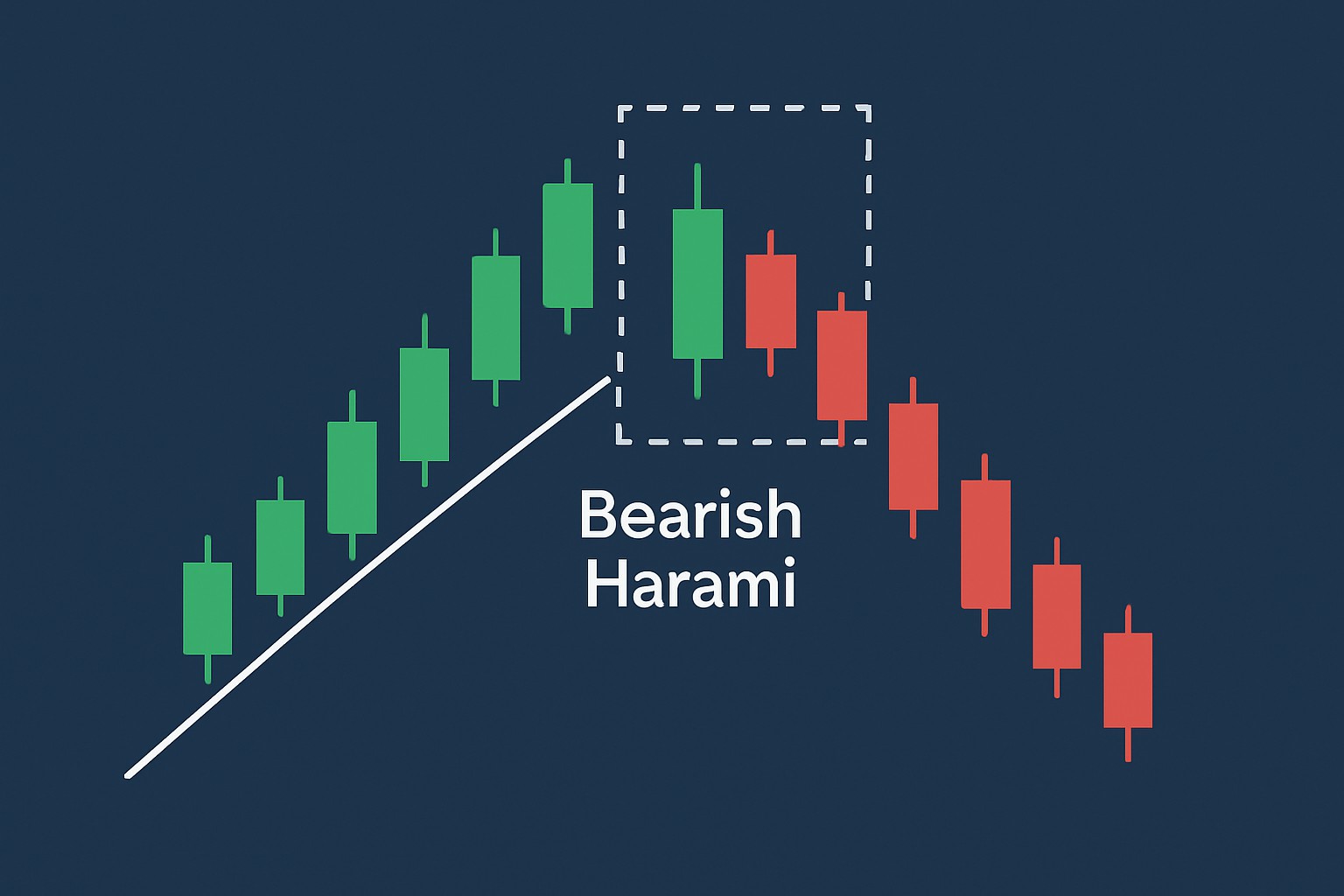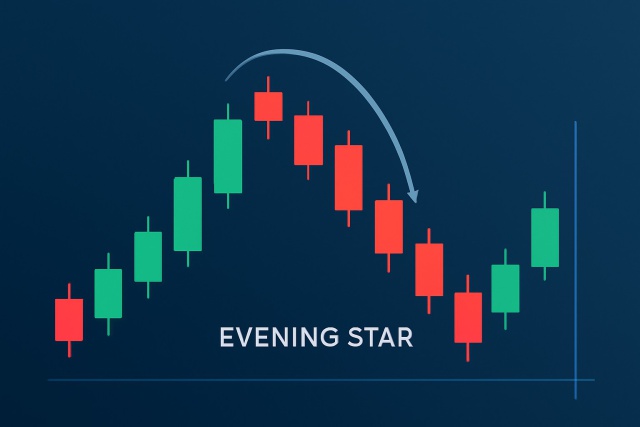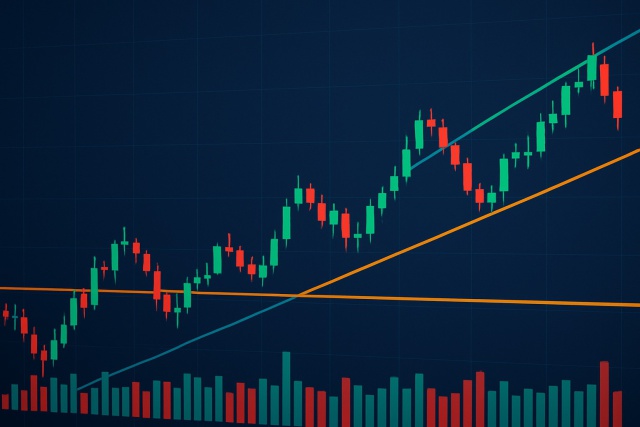
Momentum Indicator Basics for Traders
Master the momentum indicator to gauge price speed and trend strength. This ultimate guide covers ca...

The bearish harami candlestick pattern is a key signal in technical analysis that many traders watch as a hint of a potential trend reversal. It typically appears after prices rise, suggesting the buying frenzy might be losing steam and sellers could be gearing up to take control. Catching this pattern early can give traders a leg up and help them make wiser decisions, manage risk effectively, and capitalize on new downtrends before big drops show up.
A bearish harami pattern shows up on price charts as two candlesticks. First, a large bullish candle is followed by a smaller bearish candle that nestles entirely within the body of the first. It’s like the buyers are pausing for a moment and catching their breath while the sellers might be gearing up behind the scenes.
Candlestick charts have become a go-to for many when visualizing asset prices because each “candle” tells a story of the opening, closing, high and low prices over a specific time frame. The body captures the gap between the open and close while thin wicks mark the price extremes.
Spot a bearish harami by keeping an eye out for an uptrend followed by a big bullish candle that really drives home the buying pressure. Next, look for a smaller bearish candle that snugly fits within the real body of that previous candle—this often hints at a bit of market hesitation. It’s worth checking out different timeframes too, since this pattern can play out quite differently on intraday charts compared to daily ones. Also, watch out for the usual market noise that can sometimes muddy the waters.

Visual example of a bearish harami candlestick pattern showing the two key candles and their relationship on price chart
The bearish harami suggests that the once robust buying momentum is beginning to lose steam, hinting at a possible change from an uptrend to a downtrend.
The bearish harami pattern often pops up when buyers seem to be losing their grip, hinting that sellers could soon step into the spotlight and nudge prices down a notch or two.
| Pattern Name | Description | Key Differences | Typical Signal Strength |
|---|---|---|---|
| Bearish Harami | A two-candle pattern where a smaller bearish candle cozies up inside a larger bullish candle | The second candle is noticeably smaller and tucked fully inside the first, hinting that the bullish momentum might be running out of steam | Moderate to strong |
| Bearish Engulfing | The second bearish candle completely swallows the first bullish candle | This bigger bearish candle really takes over, giving a clearer, bolder hint that the bears are stepping in with confidence | Strong |
| Doji | A candle with almost no body that essentially screams 'I am undecided!' | A lone candle where the open and close are practically neck and neck, signaling a market caught in a bit of a hesitation dance | Weak to moderate |
| Evening Star | A three-candle pattern that tells a story of reversal: starting with a big bullish candle, followed by a small uncertain one, then a hefty bearish candle | More intricate than the others, this pattern usually waves a stronger flag that a reversal is on the horizon | Strong |
Traders often confuse the bearish harami with patterns like the bearish engulfing or the evening star. Unlike those, the harami features a smaller second candle nestled within the first one and usually hints at a slower loss of momentum.
The bearish harami can be a useful heads-up for potential reversals though its reliability depends on the broader market context, volume confirmation and how well it aligns with the overall trend.
Traders often lean on the bearish harami pattern as a handy signal, especially when they patiently wait for confirmation before diving into short positions. They tend to set their stop losses with care and manage their risk by picking targets anchored to support and resistance levels. Pairing this pattern with charting tools like TradingView can really sharpen analysis and give a better sense of when to make the move
Keep an eye out for a clear bearish harami pattern on whatever timeframe you happen to be watching—it’s like spotting a subtle warning flag waving in the distance.
Don’t just take it at face value. Look for solid confirmation with higher volume or momentum indicators such as RSI or MACD to support your hunch.
When a confirming bearish candle closes firmly below the pattern, that’s your green light to enter a short position because timing really is everything here.
Place a stop-loss just above the high of the first bullish candle to prevent losses from sneaking up on you.
Plan your exit strategy by setting profit targets near key support levels or previous lows so you avoid being that trader who holds on a little too long.
Common slip-ups with the bearish harami candlestick pattern come from ignoring the bigger trend and leaning too heavily on the formation alone without any backup signals. It is also often confused with look-alike candlestick formations.
Struggling to improve your trading performance? Edgewonk's advanced analytics tools are designed to give you the edge you need.
With detailed trade journaling, robust strategy analysis, and psychological insights, you'll gain a comprehensive understanding of your strengths and weaknesses. Don't miss out on this game-changing opportunity.
Traders, it's time to elevate your game. Edgewonk is the ultimate trading journal software designed to empower you with data-driven insights and personalized strategies. Take control of your trading journey and maximize your potential.
15 articles published
Known for demystifying complex derivatives trading through accessible education, this former Wall Street trader turned educator empowers retail investors with institutional-level strategies.
Read Posts
Master the momentum indicator to gauge price speed and trend strength. This ultimate guide covers ca...

Discover how to recognize the evening star candlestick pattern—a powerful signal highlighting potent...

Trend lines are essential tools in technical analysis that help traders identify market direction an...

Discover how inside bar patterns signal key market pauses and possible breakouts or reversals. This...
